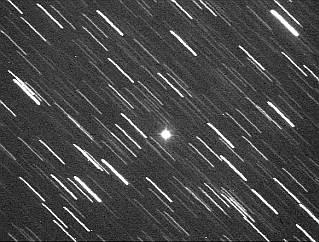
Minor Planet 2002 NY40
30 second exposure, taken on 2002 August 18.
This Apollo asteroid, estimated to be 500m to 700m in size, passed
only 0.00352 A.U. (about 527'000km) from Earth on August 18, 2002.
Shining at 10mag, it is by far the brightest object in the field.
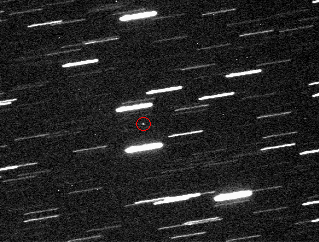
Minor Planet 2000 SM10
60 second exposure, taken on 2000 September 29.
This Apollo asteroid, estimated to be less than 100m in size, passed
only 0.01 A.U. (about 1.5 Million km) from Earth at that time.
Shining at 17.8mag, it moved nearly 2° per hour.
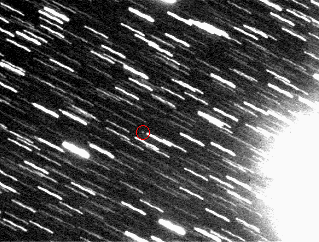
Minor Planet 2000 UK11
120 second exposure, taken on 2000 November 02.
This Aten asteroid, estimated to be less than 50m in size, passed
only 0.01 A.U. (about 1.5 Million km) from Earth at that time.
Shining at 18.4mag, it moved about 0.6° per hour.
The 5.7mag star HIP 98844 just enters the field at right.
Though this star is only barely visible to the naked eye,
it is about 120'000 times brighter than the asteroid!
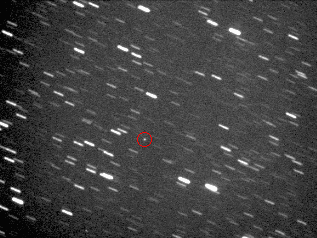
Minor Planet 2001 EC16
30 second exposure, taken 2001 March 24.
This Apollo asteroid, estimated to be between 100m and 200min size,
passed only 0.01 A.U. (about 1.5 Million km) from Earth at that time.
Shining at 15.5mag, it moved about 0.9° per hour.
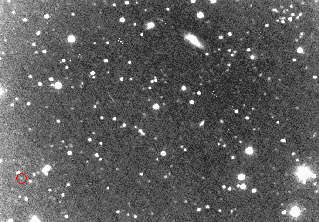
Minor Planet 2000 GN171
20 minute exposure, taken 2001 April 01.
This Kuiper belt object was recovered nearly 6' off from the predicted position,
close to the edge of the CCD frame. At 20.5mag, the object is about
631'000 times fainter than the faintest stars visible to the naked eye.
Three, apparently interacting, anonymous galaxies are visible near the top of the image.
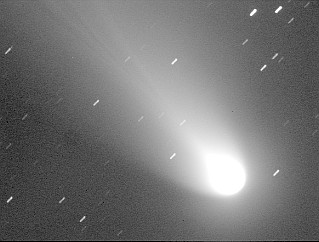
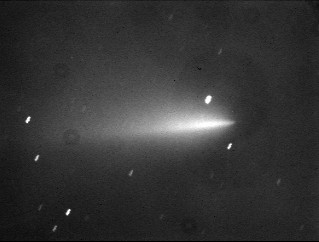
Comet C/1999 S4 (LINEAR)
Left: 60 second exposure, taken on 2000 July 22.
Right: 120 second exposure, taken on 2000 July 31.
Note that the comet has completely disintegrated within only ten days.

Diffuse Nebula Messier 8
30 second exposure, taken on 2000 July 31.

Globular Cluster Messier 13
60 second exposure, taken on 2000 April 25.

Spiral Galaxy Messier 51
120 second exposure, taken on 2000 March 07.
Note the faint halo extending from M51's companion galaxy,
and the fine detail in the spiral arms of M51.
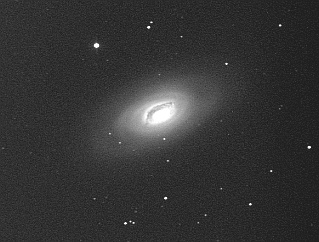
Spiral Galaxy Messier 64
60 second exposure taken on 2000 April 20.
This object is also known as the "Black Eye Galaxy" because
of the large dark cloud near the nucleus of the galaxy.
Note the details visible within that cloud.
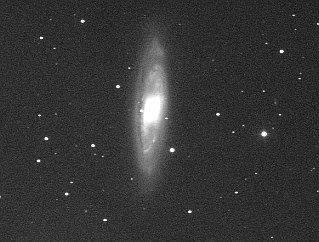
Spiral Galaxy Messier 65
60 second exposure, taken on 2000 March 22.
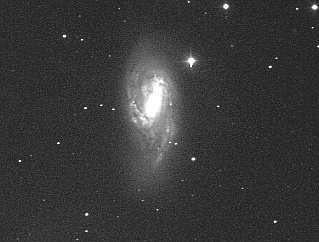
Spiral Galaxy Messier 66
60 second exposure, taken on 2000 March 22.
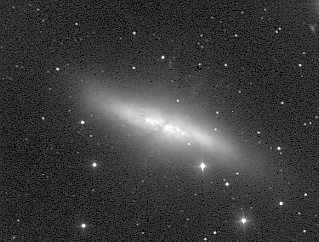
Irregular Galaxy Messier 82
120 second exposure, taken on 2000 05 31.
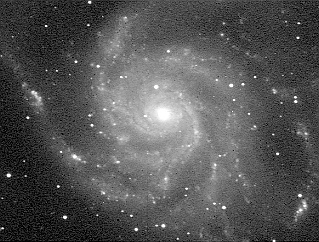
Spiral Galaxy Messier 101
120 second exposure, taken on 2000 May 09.

Spiral Galaxy Messier 104
120 second exposure, taken on 2000 May 05.
Note the large, faint halo surrounding the galaxy and
the anonymous 15.5mag galaxy near the bright star
on the eastern (left) edge of the image.

Spital Galaxy NGC 4565
120 second exposure, taken on 2000 06 03.
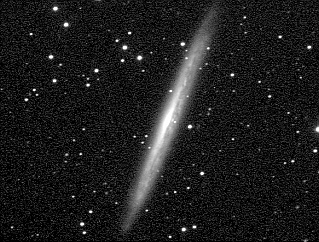
Spiral Galaxy NGC 5907
120 second exposure, taken on 2000 06 03.
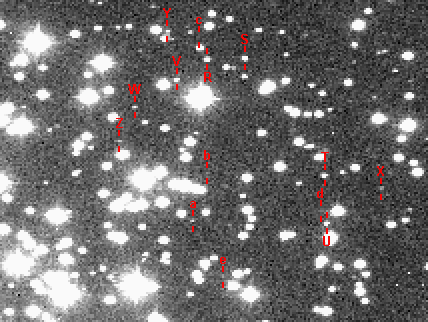
Stellar magnitudes in Messier 67
Zoomed section (about 10' x 7') from an unfiltered 60 second exposure taken on 2000 May 06.
V and R magnitudes of the stars marked in the image above are listed in the table below.
R calculated from the formula R = V - 0.040 - 0.508*(B-V)